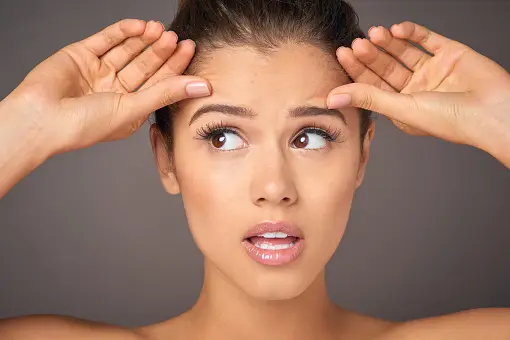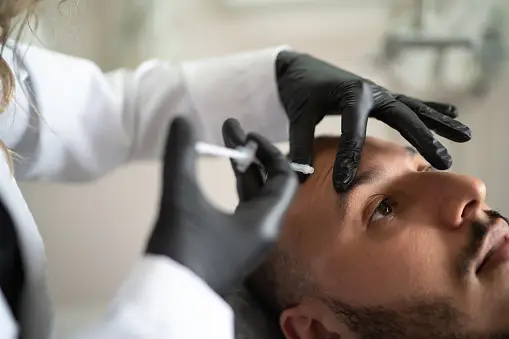Caffeine itself is not known to directly affect the efficacy or duration of Botox injections. Botox (botulinum toxin) is a neurotoxin that is used for cosmetic and medical purposes to temporarily paralyze muscles and reduce the appearance of wrinkles or treat various medical conditions.
Caffeine is a stimulant found in various beverages like coffee, tea, and energy drinks. It primarily affects the central nervous system, promoting wakefulness and alertness. It does not have a direct impact on the way Botox works at the neuromuscular junction.
However, it’s worth noting that caffeine consumption might indirectly influence the outcomes of cosmetic procedures, including Botox treatments, in a couple of ways:
- Increased Blood Flow: Caffeine can temporarily increase blood flow, potentially leading to a temporary increase in heart rate and blood pressure. This could, in theory, lead to a faster distribution of Botox through the bloodstream. While this is a theoretical concern, there is limited evidence to suggest that caffeine intake at typical levels would have a significant impact on Botox distribution.
- Reduced Healing Time: Some experts believe that excessive caffeine consumption might hinder the body’s ability to heal and recover after procedures. This could potentially affect the healing process after Botox injections. However, this is more related to general healing and not necessarily specific to the interaction between caffeine and Botox.
- Bruising: Caffeine can have a mild blood-thinning effect. In theory, this could increase the risk of bruising at the injection site. However, the amount of caffeine typically consumed in beverages is unlikely to have a significant impact on bruising risk.
In general, moderate caffeine consumption is unlikely to significantly impact the results of Botox treatments. However, if you have concerns about caffeine and its potential effects on your Botox treatments, it’s best to consult with your healthcare provider or the medical professional administering the Botox. They can provide personalized advice based on your specific situation and medical history.

Why does my forehead look more wrinkled after Botox?
It’s not uncommon for some individuals to notice increased forehead wrinkling shortly after receiving Botox injections. This phenomenon is usually temporary and is often referred to as the “Botox forehead bump” or “Botox brow droop.” There are a few potential reasons why this might occur:
- Initial Muscle Weakness: Botox works by temporarily weakening or paralyzing the muscles that contribute to wrinkles. In the case of forehead wrinkles, Botox is typically injected into the muscles that raise the eyebrows. In some cases, the initial muscle weakness caused by Botox might cause the forehead skin to appear more wrinkled, especially if the muscles that counteract the raising of the eyebrows are still active.
- Muscle Imbalance: The forehead has multiple muscle groups that contribute to various facial expressions. If Botox is not evenly distributed or if specific muscle groups are affected more than others, it can lead to an imbalance in muscle activity, resulting in a change in appearance. This imbalance could temporarily accentuate certain wrinkles.
- Adjustment Period: Botox takes a few days to start taking effect, and it reaches its full effect within a couple of weeks after injection. During this adjustment period, there can be changes in muscle activity and skin appearance that might not reflect the final results. The initial increase in wrinkles could be part of this transitional phase.
- Position of Injections: The placement of Botox injections is crucial. If the injections are not accurately placed in the right muscles, it might lead to unexpected results, including increased wrinkling in certain areas.
- Personal Variation: Individuals can respond differently to Botox injections due to variations in anatomy, muscle structure, and how their bodies metabolize the toxin.
It’s important to note that these initial changes are often temporary and tend to improve as the Botox takes full effect and the muscles adjust to the treatment. If you’re concerned about the appearance of your forehead after Botox injections, it’s best to communicate with your healthcare provider or the medical professional who administered the treatment. They can assess your situation and provide guidance on whether any adjustments are needed. It’s also essential to follow the post-treatment care instructions provided by the medical professional to ensure optimal results.
Does your face sag more after Botox?
Botox is not typically used to cause sagging in the face; in fact, its primary purpose is to reduce the appearance of wrinkles by temporarily relaxing specific muscles. Botox works by blocking nerve signals that cause muscles to contract, which in turn smooths out wrinkles and lines that are caused by repeated muscle movements.
However, there are instances where improper use of Botox or excessive dosage could potentially lead to unintended results, including a drooping or sagging appearance. This is commonly referred to as “Botox droop” or “Botox ptosis.” It occurs when the muscles responsible for lifting certain facial features, such as the eyebrows or eyelids, are affected too much by Botox, causing a temporary loss of muscle function.
When Botox is properly administered by a trained and experienced medical professional, the risk of these types of adverse effects is minimized. Medical professionals take into consideration factors such as facial anatomy, muscle dynamics, and individual patient needs when determining the appropriate dosage and injection sites.
It’s crucial to choose a reputable and qualified healthcare provider when considering Botox treatment to ensure that you achieve the desired results while minimizing the risk of adverse effects. If you’re concerned about the possibility of sagging or other unwanted effects, discuss your concerns with your healthcare provider before undergoing any treatment. They can provide you with more information about the potential risks and benefits of Botox in your specific situation.
